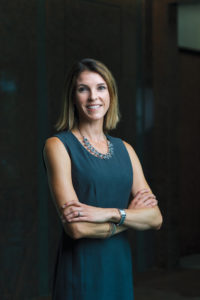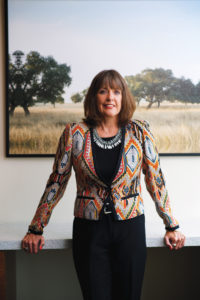Commercial Specialists In The Engine of Growth
When people think about different types of commercial real estate, they typically think about shopping centers, office buildings or warehouses. The commercial real estate industry includes much more — all kinds of industrial spaces for manufacturing and producing goods, multifamily homes, hotels, land, even special purpose real estate for facilities like churches or nursing homes.
A commercial real estate firm advises both investors and companies how to select properties for investment or development and how to negotiate lease agreements that will attract and keep tenants, all while sharing insights on the latest trends in commercial spaces. The specialized knowledge of a commercial real estate company is helpful, as the rules and regulations governing such property vary by state, county, municipality, industry, even by the size of the commercial development. With growing industry sectors in San Antonio, businesses need space to expand operations — space a commercial real estate specialist can find or develop.
These four women shared their insights into commercial real estate trends and talked about why they are optimistic about the future of their industry in San Antonio.
Kelly Ralston
Transwestern
Planning for Quality Investments Commercial real estate represents a boundless industry for Dallas native Kelly Ralston, who has worked 13 years for Transwestern. After getting her start with Trammell Crowe in Dallas, Ralston followed her husband when his job brought them to San Antonio. She leverages her undergraduate degree in business from Texas A&M University as she seeks high-performing quality investments for her clients.
Commercial real estate represents a boundless industry for Dallas native Kelly Ralston, who has worked 13 years for Transwestern. After getting her start with Trammell Crowe in Dallas, Ralston followed her husband when his job brought them to San Antonio. She leverages her undergraduate degree in business from Texas A&M University as she seeks high-performing quality investments for her clients.
Ralston has detected several shifts in commercial real estate over the past decade. The types of investors in the market previously came mostly from established institutions and possessed a shorter five-year time frame for holding onto real estate investments. While these investors are still in the market, Ralston sees an increase in foreign investment, especially from Mexico. “Mexican investors tend to be more patient, with a longer-term vision for holding investments,” she said. “They’re comfortable with San Antonio.”
Another shift has been in where focused commercial real estate development activity has been. According to Ralston, the epicenter 10 years ago was more North Central, near Highways 281 and Loop 410. “Now, it’s shifted more to 410 and I-10 near the Medical Center, as well as more north to the intersection of Loop 1604 and I-10,” she said.
As for more recent changes, Ralston can see how San Antonio is evolving as a city and a market. “The quality of the new construction being delivered here is Class A, which benefits our industry,” she said.
Class A buildings represent the highest-quality buildings in the market and are generally the best-looking buildings with the best construction and high-quality building infrastructure. These tend to be well located and have good access and professional management, attracting the highest-quality tenants and commanding the highest rents.
Class A buildings also attract many out-of-state tenants. The California-based streaming video player company Hulu will spend an estimated $13 million building out a 45,000-square-foot campus at 4511 Horizon Hill Boulevard in the Transwestern’s Fountainhead Business Park, while the Illinois-based Grainger, a maintenance, repair and operating products supplier company, also recently moved into Fountainhead Business Park.
Ralston sees a continued push for quality construction and amenities in commercial spaces. Mixed-use developments like the ones at the Pearl Brewery, the Elian and La Cantera embrace the demand for workplaces, residences and entertainment to coexist in an urban-style mixed-use development. Both employees and companies seeking to recruit and retain talent are interested in spaces that embrace the work-live-play trend that has taken root in San Antonio.
Technology has also impacted commercial real estate, with the introduction of the internet, email, live time reporting and tracking systems, and electronic signatures quickening the pace of the industry and increasing client expectations of faster response times. These technology-driven innovations only serve to support Ralston’s dedication to careful planning of her clients’ projects.
Carolyn Shaw
Stream Realty
Making the Numbers Work One would think starting a career in real estate at the bottom of the housing cycle would have deterred San Antonio native Carolyn Shaw from joining Stream after completing her undergraduate degree in finance at the University of Texas at Austin. She started in 2009 at a challenging time for real estate in general, during the housing real estate “bubble” when prices dropped to historic lows. The experience taught her good working habits from the beginning of her career, especially the importance of being thorough.
One would think starting a career in real estate at the bottom of the housing cycle would have deterred San Antonio native Carolyn Shaw from joining Stream after completing her undergraduate degree in finance at the University of Texas at Austin. She started in 2009 at a challenging time for real estate in general, during the housing real estate “bubble” when prices dropped to historic lows. The experience taught her good working habits from the beginning of her career, especially the importance of being thorough.
“Every single deal matters, no matter the size,” Shaw said. “It’s meaningful to your owner, so you have to work every deal, follow up and think through every angle of it.”
Shaw’s portfolio includes commercial real estate acquisitions and development, typically involving anywhere from a million to a million and a half square feet of commercial space across all her projects. She works with the developer and/or owner of a large project on all phases of development. Not only is she involved in site selection to help decide where to develop land, but her work continues as she helps the developer with the platting and surveying of the land, understanding utilities, dealing with construction drawings and the permitting stage, as well as working loan packages. Her finance expertise comes in handy as she also develops the project’s budget and oversees its development.
“There is a year minimum of planning effort before construction can even start,” Shaw said. “Construction on a large project can easily take another year, with leasing afterward to populate the building.”
Her latest completed projects are a two-story 101,000-square-foot office building located on the south side of Highway 151 in Westover Hills, the One51 Office Centre, and the state-of-the-art 397,600-square-foot warehouse located at Interstate 35 in New Braunfels, a logistics facility she developed for USAA.
The trend Shaw sees in current development is a focus on efficiency — both in the layout and use of the commercial space and in its co-location with other amenities. Whether building a new space or redeveloping an existing one, companies are looking to be cost-effective in how they utilize space.
“For the most part, such as in the new Westover Hills building, the majority of the commercial space is meant for open office use,” Shaw said. “The other growing trend is a move toward a live-work-play mix of development, such as at the Pearl or at La Cantera. San Antonio is catching up with other cities on this particular trend.”
Shaw also thinks the industrial real estate market will remain strong in San Antonio, as she explained how Amazon has changed the marketplace, and with it, customers’ expectations on receiving their purchases.
“We’re ideally located in the middle of the country, we’re right on [Interstate Highways] 35 and 10, and we have commercial traffic coming in from Mexico,” Shaw said. “Retailers will need more warehousing space in order to ship goods quickly.”
What excites Shaw the most about the current scene in commercial real estate are the well-executed back-office projects that help recruit companies to San Antonio. Office projects with amenities such as a gym, locker rooms with showers and food options for tenants are in demand. The balance between spending money on amenities and sacrificing rentable space versus attracting companies to San Antonio is one where Shaw’s keen financial acumen and planning experience become even more valuable.
Christi Griggs
Peloton Real Estate
Adviser Who Visualizes Potential Commercial real estate is a second career for Texan Christi Griggs. A designer for over five years with a degree in interior design from the University of Texas at San Antonio’s School of Architecture, Griggs has always been interested in the business aspect of interior design.
Commercial real estate is a second career for Texan Christi Griggs. A designer for over five years with a degree in interior design from the University of Texas at San Antonio’s School of Architecture, Griggs has always been interested in the business aspect of interior design.
“It’s difficult for people to visualize space,” Griggs said. “I can help people ‘push the buy button’ by helping them visualize alternate layouts. I can answer lots of questions rather than having buyers go to a web designer for a computer-assisted design or an architect — that takes time, and time kills deals.”
Over the course of 16 years at Peloton, Griggs has seen how the exciting changes in San Antonio are attracting investors from across the country. What intrigues her most about commercial real estate is dealing with people from so many industries. “The fact is that San Antonio is still growing and still building,” she said. “We get lots of people from all over, East Coast, West Coast, as well as from the middle of the country.”
The next time you’re walking downtown, a glance at the One Riverwalk building, which USAA currently leases, reveals Griggs’ name on the building. “I’ve worked on that one several times over the years,” she said. “I officed there in my first job in real estate, then leased it to two different owners, including its current one, USAA.”
Griggs points out how real estate decisions are being made with lifestyle choices in mind rather than focusing only on the bottom line. As more young professionals join the workforce, offering the opportunity to work, live, and play in a vibrant place where owning a car isn’t necessary has become a recruitment tool. Another emerging trend Griggs notes is how office building location has become less of a factor for employees. Co-working options, working remotely, job sharing, and more employees using Uber and public transportation are all helping to drive the location and design of office buildings.
“With remote working options, we’re becoming less dependent on office location and transportation,” Griggs said. “Office buildings are much denser now, but that doesn’t translate into more parking because people don’t come into the office like they used to, so there’s more flexibility in office site location.”
Griggs mentors students and is a believer in the value of internships to give young people a taste of what a commercial real estate career entails. Commercial real estate requires in-depth knowledge of the many factors that impact someone’s business, such as the psychology of how employees interact in a space, specific characteristics of a site’s location, and understanding the economics of how to expand and contract commercial real estate space as the business contracts and expands.
Carrie Caesar
Cushman Wakefield
Putting San Antonio on the Map For many years San Antonio had a singular economic base driven by defense investment in multiple military bases, according to Carrie Caesar. Over time she has seen how San Antonio has diversified its economy so it is not so heavily dependent on the military sector and tourism.
For many years San Antonio had a singular economic base driven by defense investment in multiple military bases, according to Carrie Caesar. Over time she has seen how San Antonio has diversified its economy so it is not so heavily dependent on the military sector and tourism.
“Energy, the biotech and biomedical sector, manufacturing, technology, e-commerce — all this growth is putting San Antonio on the map,” Caesar said. “Because investors are interested in these emerging sectors, they’re interested in the growth of San Antonio.”
The Colorado-born Caesar moved to Austin to attend high school after growing up in the Midwest. After obtaining her master’s degree from Texas A&M University in land economics and real estate, Caesar moved to San Antonio to work on real estate appraisals. In the business for 17 years, Caesar has since moved into the commercial division to focus on commercial investment sales. She recently joined Cushman Wakefield in San Antonio.
“Our economy has become more diverse, and our demographic growth has increased along with these emerging trends,” Caesar said. “Our employment base is much different now, reflecting the economic growth in our new tech industry, as well as significant growth in biotech and biomedical, manufacturing, industry and e-commerce.”
Caesar has seen the increase in investors acquiring commercial assets. Because of the surge in technology-oriented businesses, the commercial real estate sector is growing to match demand from investors across the U.S. and globally. “Historically we’ve not been included in the discussion of gateway markets like Los Angeles, Dallas or New York,” she said. “San Antonio is now included in these tracking reports, especially in the industrial sector.”
San Antonio’s proximity to Mexico and Latin America is a driver in the city’s industrial sector, according to Caesar. The population growth in San Antonio also translates into more people buying online who expect next day or same day delivery. To meet growing demand for industrial types of warehousing space, such as for storage, logistics, or manufacturing, retailers are looking to store merchandise in warehouses closer to consumers.
Over time, Caesar has seen San Antonio grow outward, moving geographically outside its urban core. An emerging trend is redevelopment of the city’s center. “[The development at] Pearl was the catalyst for that, but I think we will continue to see redevelopment of older buildings,” she said. “I see lots of in-fill development in our future.”
Caesar mentors students interested in pursuing a real estate career and is active in the San Antonio chapter of Commercial Real Estate Women. A past president of the local chapter, she emphasized the importance of the chapter’s partnership with the University of Texas at San Antonio’s School of Business, which helps real estate and finance undergraduate and graduate students with mentoring and scholarship opportunities.
By Iris Gonzalez
Photography by David Teran
The post Women in Commercial Real Estate appeared first on San Antonio Woman Magazine.
Source: Woman – Women in Business




